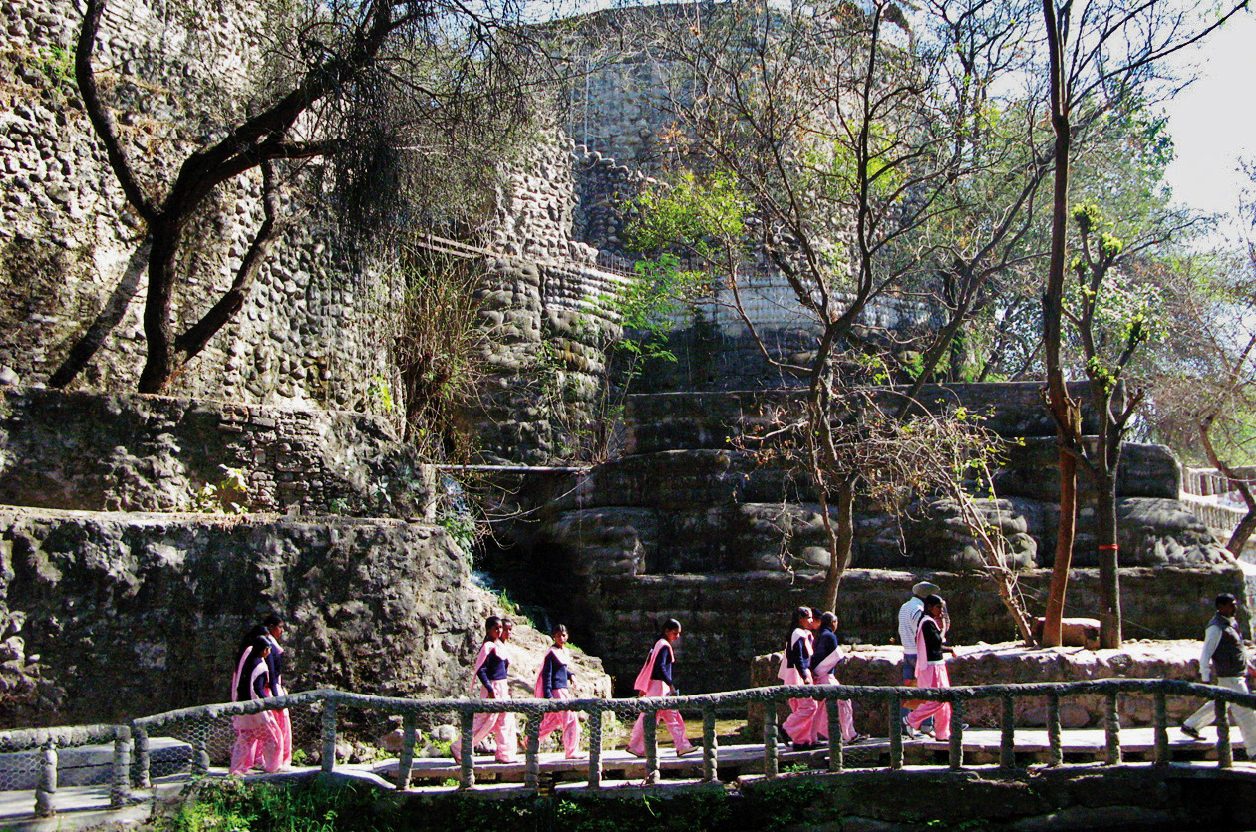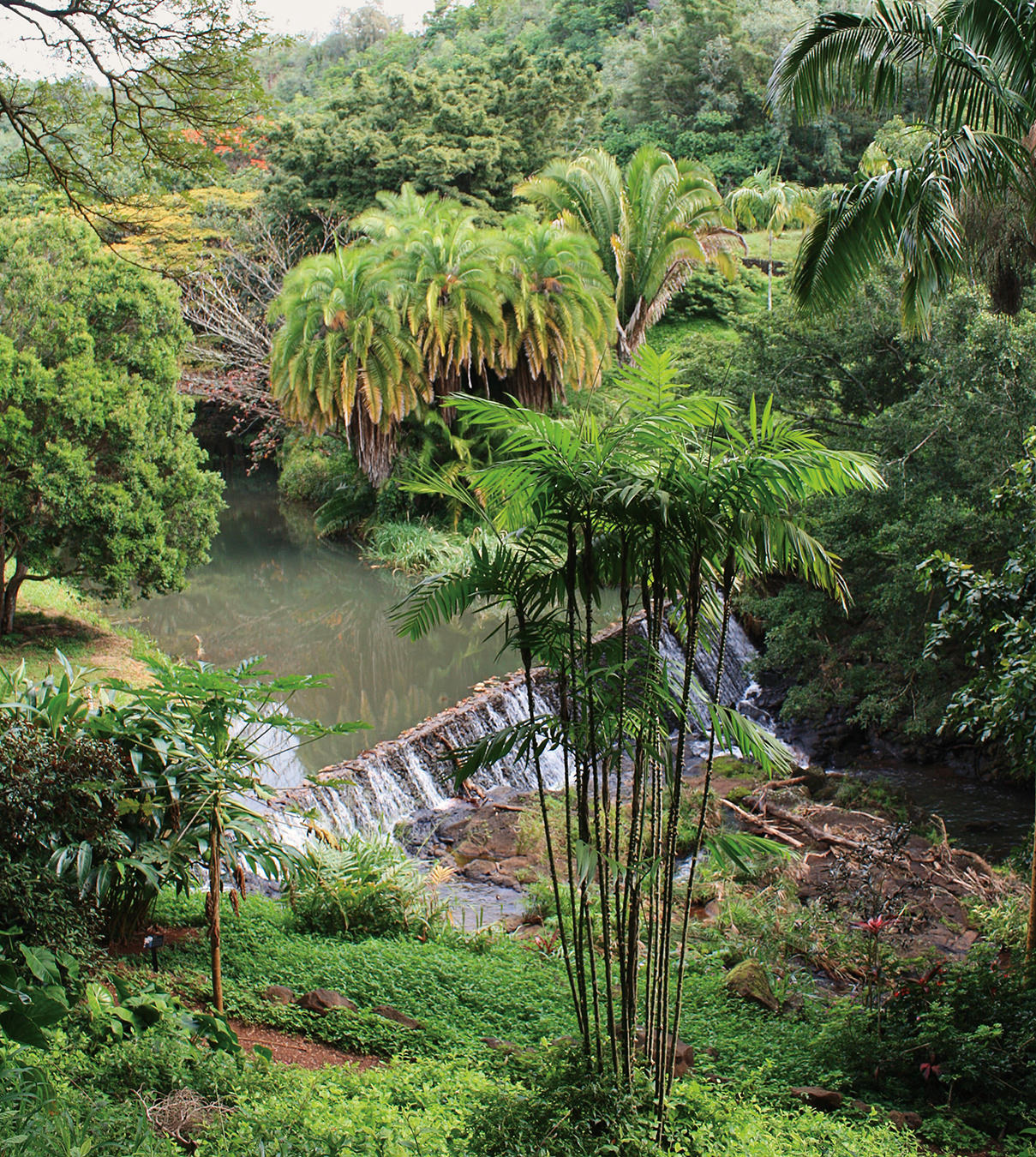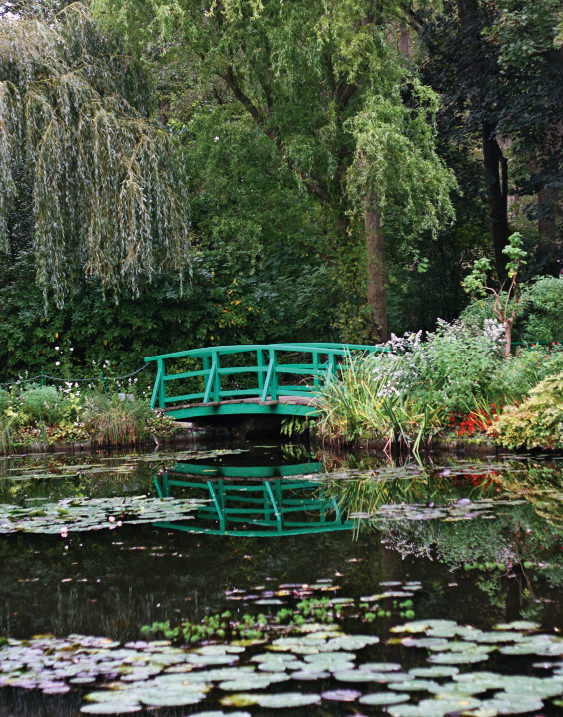Nek Chand’s Rock Garden of Chandigarh
A concrete kingdom.

Photo by Virginia Dixon.
The legend of Nek Chand Saini and his sprawling odds-and-ends world in the north of India begins when he was just a lowly road inspector and first dreamed his great creation. In order to fulfill his vision, in 1958 he began to pick material from the refuse of buildings that were being demolished for the construction of the planned city of Chandigarh. He scavenged at night and had to carry his raw materials in secret through a jungle filled with tigers and snakes to the scrubland that would be his building site. He sorted what he had collected and stored it in individual piles—rocks, tile, plastic, wire. Not until seven years had passed did he begin to build.
Nek Chand made stone waterfalls and walls and monsters and promontories until in 1975, when he was discovered by authorities, after 10 years (his work, today, covers more than 25 acres). The Indian authorities neither arrested Nek Chand nor bulldozed his vast creation, even though it illegally occupied government land. No, the man was heralded, his achievement immediately recognized for the great thing it was. He was even given assistants and a salary to continue building. His creation opened to the public in 1976 and was called the Rock Garden of Chandigarh. Before two years had gone by, it was the biggest tourist attraction in India, second only to the Taj Mahal. Nek Chand, 87, is still working.
It’s a four-hour train ride north from New Delhi to Chandigarh. After you arrive at the Rock Garden and purchase your ticket, you pass through a low portal in a stucco wall, straighten up and raise your head, and immediately get the visual equivalent of a kick in the eye—everything around you seems to be jumping out at you. And what is around you? Everything, it seems. Hills filled with monkeys and men, women and lions. Twisting walled walkways that give on to esplanades of jewelled cement ladies. Terraces of unknown animals. Waterfalls and an amphitheatre. The Rock Garden is laid out in a sort of maze so you quickly lose all sense of perspective. And it just goes on and on, revealing its wonders.
Of the claim that Nek Chand’s Rock Garden amounts to the ultimate personal artistic achievement of the 20th century, a counter-argument might be made to the effect that it is really the mass of the work that overwhelms, not the craftsmanship. This is evident after passing through the original Rock Garden into a vast open space that has also been mosaicked, not by Nek Chand but by volunteers hired to enlarge the attraction and thereby increase revenues with food carts and souvenir shops. The volunteers are eager young people who do nice work, but they are not artists. The work is pleasing, but nothing unexpected happens. There is no kick to the eye, no crazy genius running around.
Chandighar is a planned community. Everything in it—roads, houses, commercial buildings—is rigid and geometric. The architect behind it, the éminence grise, was the Swiss architect Charles-Édouard Jeanneret, known as Le Corbusier. It’s wonderfully ironic that an unassuming clerk of the roads department made a crackpot garden in secret on the other side of the jungle while Le Corbusier and his teams with their slide rules were constructing an otherwise sterile Chandigarh.
Photo by Virginia Dixon.



